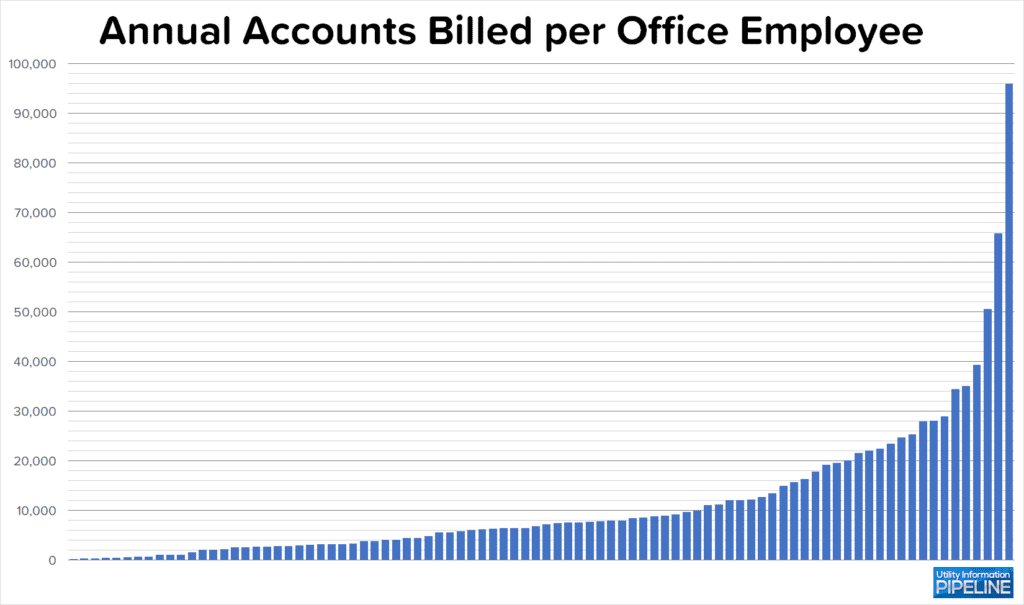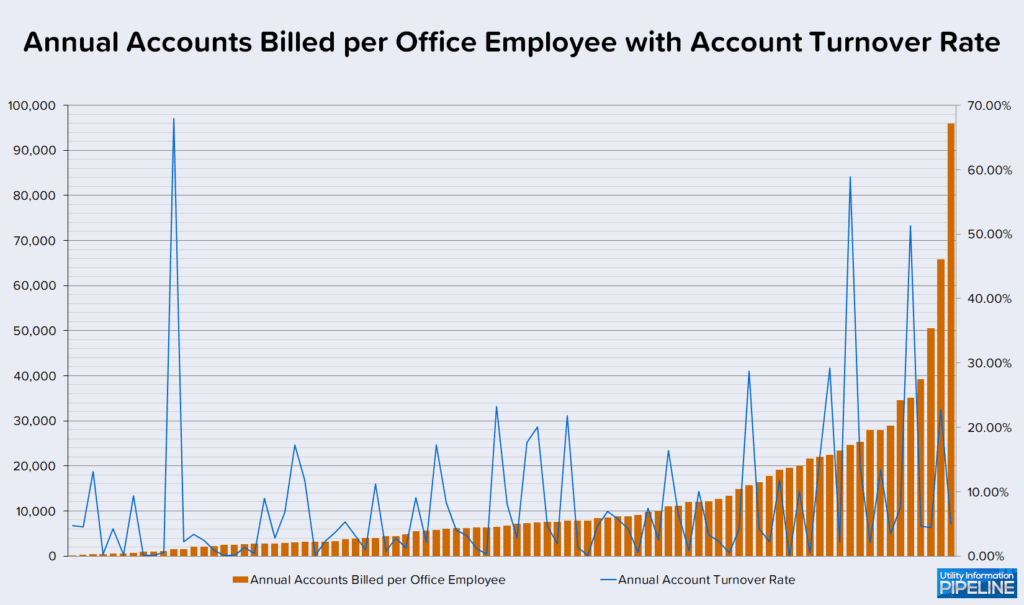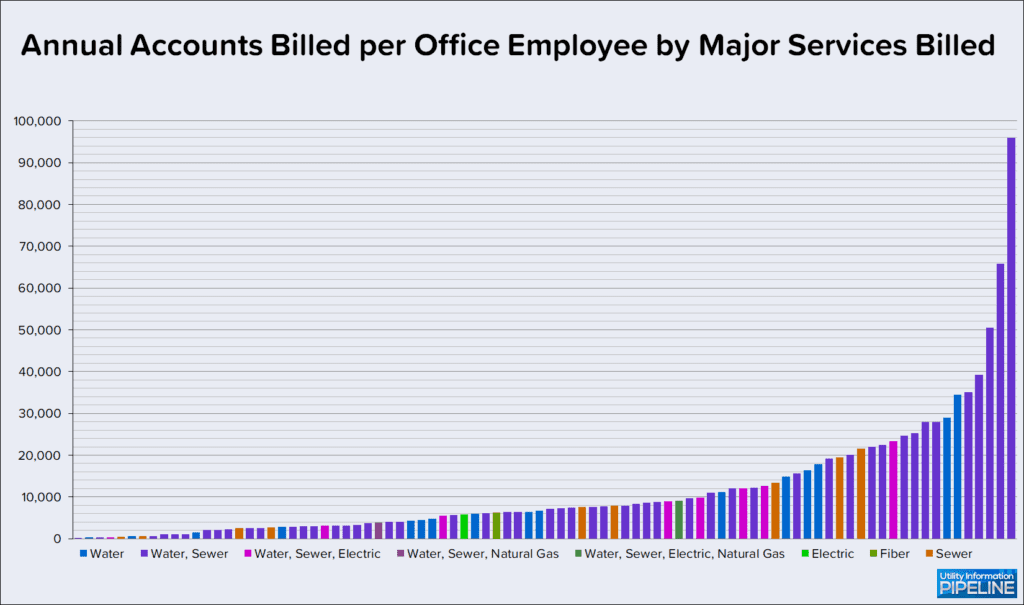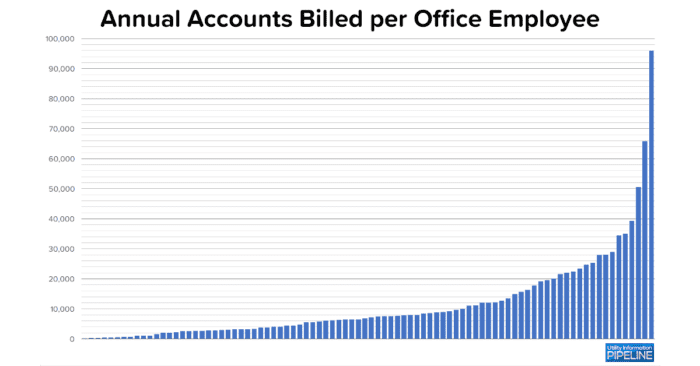For the past several months, I’ve been conducting the 2022 Utility Staffing Survey. This survey has become a biennial survey, alternating years with the Utility Fee Survey. The initial Utility Staffing Survey was in 2016, followed by 2018 and 2020. For sake of comparison, here are the results from the 2020 Utility Staffing Survey.
This is the first of two Utility Information Pipeline issues publishing the results of the 2022 Utility Staffing Survey. Today, we’ll examine demographics of the survey respondents, staffing levels, and factors outside the control of the utilities. In two weeks, we’ll review staffing levels and practices each utility can control, such as such as meter reading, payment processing, and bill printing.
Demographics of survey respondents
88 utilities representing 25 states, ranging in size from 35 to 192,000 active accounts participated in the survey. Click on the links below to see charts of the various demographic data for the survey respondents:
Size of Participating Utilities
Size of Participating Utilities Under 20,000 Accounts
Services Provided by Responding Utilities
Positions of Individuals Completing Survey
Accounts per office employee
To arrive at an accurate index to compare utilities of differing sizes and billing frequencies, I derived a value for the number of accounts billed annually per office employee. This formula multiplied the number of active accounts by the number of times each account is billed per year (12 for monthly billing, 6 for bi-monthly billing, 4 for quarterly billing) then divided that product by the total number of office employees. The higher the result, the more efficient the office is considered to be.
This year, the most efficient utility was also the most efficient utility in the four years I’ve been conducting the Utility Staffing Survey! The results ranged from 84 to 96,000 as represented by the graph below: (clicking on any of the graphs will open a larger image in a new window):

If you would like to calculate your utility’s Annual Accounts Billed per Office Employee value to see how you compare, I’ve created an online calculator to determine this value. Please click here to calculate your utility’s value.
Annual customer turnover
As with past surveys, I wondered if the turnover in customers would be a factor in how efficiently offices are staffed, so the survey asked how many applications for service (including routine move in/move outs and new construction) each utility processes per year.
Some utilities bill only property owners, and those will have a much lower turnover rate than utilities that bill tenants.
Not surprisingly, as in previous Utility Staffing Surveys, the annual turnover rates ranged widely, from .05% to 67.95%, and appear to have no correlation to staffing levels.

Major services billed
The final variable I examined for this issue was major services billed (water, sewer, electric, natural gas, and, for the first time, fiber optic) looking for a correlation between the number of services billed and office staffing. I only considered the major services, because other services, such as garbage, stormwater, or area lights, generally are billed as flat-rate services and are not nearly as labor-intensive to bill.
As was the case in prior surveys, utilities billing multiple metered services require more staff than those billing for only a single metered service. This is confirmed in this year’s Utility Staffing Survey with 21 of the 22 most efficient offices, including the top 11, billing for only one metered service (three only bill for sewer), as shown below:

Next issue
The next issue will analyze staffing levels and labor-saving practices each utility can control, such as meter reading, payment processing, and bill printing.
Security deposit webinar
I will be leading the second in a series of four webinars for MuniBilling on Thursday, December 1 at 11:00 am, entitled Is Your Security Deposit Sufficient?. The webinar will help you determine if your security deposit is adequate to avoid bad debt write-offs. If you are interested in attending, you can register for the webinar by clicking here.
Is your office adequately staffed?
If you think your utility is understaffed or could operate more efficiently, please give me a call at 919-673-4050 or email me at gary@utilityinformationpipeline.com to learn how a business review could help you determine this.

© 2022 Gary Sanders
